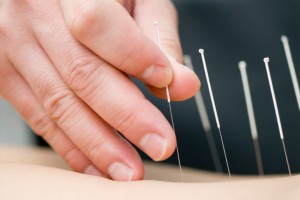 In Autumn, we observe nature withdrawing inward. We see leaves wither on the branch as the trees gather energy inward and down to the deep center and roots to protect and guard vitality, like a precious secret, throughout the winter months.
In Autumn, we observe nature withdrawing inward. We see leaves wither on the branch as the trees gather energy inward and down to the deep center and roots to protect and guard vitality, like a precious secret, throughout the winter months.
As winter draws near, we notice a similar process in our own bodies. Our skin become pale and dry. Our energy draws inward to protect vital organs from the dampness and cold. We develop the urge to be quiet, sleep and stay indoors more than in the warmer months.
Our modern, urban lifestyle often prevents most of us from the luxury of indulging our natural instincts to hibernate when winter arrives. Exposing ourselves to the elements and over-spending energy during cold months can compromise the immune system, leaving us vulnerable to viruses that cause influenza and the common cold.
For those of us who are unable to spend the winter in Mexico, here are some tips on how to protect your immune system:
Never leave the house with wet hair
Dampness allows cold to penetrate more deeply. It’s especially important to prevent the neck and head from becoming exposed to harsh elements. This is usually the first area to be effected by colds and flu. Most infectious illness in winter begin with a stiff neck and headache.
Avoid eating too many cold foods
In winter, our bodies are using energy to warm our internal organs. Help your body in this regard by eating healthy cooked cereals, soups and stews. Fresh fruit and vegetables are important too, but are to be consumed in much smaller quantity than in summer months. Root vegetables, brown rice and carefully chosen protein sources can be a staple.
Try not to eat too much spicy foods
Even though spicy food is great for warming our bodies, it’s too ‘hot’ in nature to be useful in winter. Spicy foods are used in hot climates to promote sweating in order to cool the body and are delicious, however, spicy foods are an inappropriate choice for use during cold weather.
Wear a scarf and cover your legs
Even those of us who don’t feel the need to cover our necks and legs in winter need to avoid exposing bare skin. A light scarf, thin gloves and tights can be enough to guard against the elements.
Try acupuncture to boost your immune system
There is scientific and clinical evidence to support claims that acupuncture is an effective treatment for migraines and headaches.; as well as getting rid of lingering symptoms of colds and flus that are prevalent this time of year. Acupuncture works by regulating circulation to the internal organs which in turn allows the immune system to work as nature intended to heal the body.
Written by: Victoria Spaurel, R.Ac., Registered Acupuncturist

 The first question you need to ask is; is a half marathon a good idea for every marathoner?
The first question you need to ask is; is a half marathon a good idea for every marathoner? Degenerative disc disease is one of the most common causes of low back pain.
Degenerative disc disease is one of the most common causes of low back pain.
 Orthotics
Orthotics Trigger point dry needling, also referred to as intramuscular stimulation (IMS) and/or intramuscular therapy (IMT) is an invasive procedure in which an acupuncture needle is inserted into the skin and muscle.
Trigger point dry needling, also referred to as intramuscular stimulation (IMS) and/or intramuscular therapy (IMT) is an invasive procedure in which an acupuncture needle is inserted into the skin and muscle. 